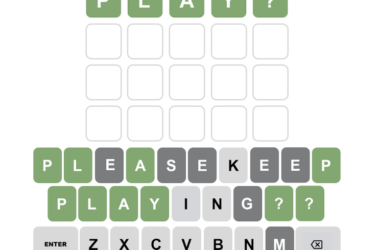As we reach the peak of midterm season, campus libraries are jam-packed with students scrambling to get all their work done. Although everyone is essentially there for the same reason, let’s face it: Some students simply look cooler than others. Could this be the result of their carefully curated fall outfits? Their brand-new $800 AirPod Maxes? Or is it their aesthetically decorated laptops? I would argue that it’s the latter.
I had the chance to chat with some students about the increasingly popular phenomenon that is covering your laptop with stickers. Being fairly new to the trend myself, I learned a lot about the thought process behind it and how it varies from student to student.
Maximalist or minimalist?
Students love to show off the cool stickers they pick up at trendy brand stores, cute cafés, or clubs to promote their extracurricular activities and showcase their personalities. But how does one select which stickers make the cut? This is a widely debated topic amongst sticker fanatics. Some attempt to fill up every inch of their laptop cover, whereas others prefer a smaller, more meaningful set of stickers. Those who favour a more minimalist approach, like Alex Toca, U1 Management, prefer to have about 50 per cent of their cover coated.
“Less is more,” Toca said. “Many stickers make a laptop cover look too crowded.”
Others disagree with this: A laptop cover is meant to be as decorative as possible. After all, why waste space? Having more stickers makes a laptop cover much more captivating to the eye.
What’s the motivation behind laptop stickers?
I received multiple answers to this question, but one in particular frequently came up: Laptop stickers are an excellent way of exhibiting one’s various interests, as well as giving people a taste of their personalities. In general, students seem to select stickers that hold some meaning for them.
Anastasia Van Ryswyk, U1 Arts, shared the significance behind her laptop stickers in an interview with The McGill Tribune.
“Some of them are school logos from universities of my state of residence, which reminds me of home,” Van Ryswyk said.
Better to showcase a smaller or larger number of interests?
Luca Lexham Cianciaruso, U2 Management, explained the importance of sticker diversity.
“Just like computers are used for a variety of purposes, stickers are meant to showcase a variety of interests,” Lexham Cianciaruso said.
This is pretty much a consensus among students: It’s better to display various topics of interest as opposed to one. The way students approach this, however, differs. Some will go out of their way to buy stickers and make their laptop cover as diverse as possible to ensure they display every aspect of their overwhelmingly interesting personalities. As such, they’ll pay extra attention to ensure a variety of topics are represented amongst the stickers they choose.
When “many” becomes “too many”…
Although the sticker decorating process may seem fun, it can get quite crowded with multiple stickers. Moreover, attempting to remove stickers is a tricky process, as it can easily result in a sticky, dirty-looking laptop if not executed with steady hands and laser focus so it’s important to be meticulous when removing them. The best trick, apparently, is to use nail polish remover. This sounds dubious, I know, but students swear by it: Once the remover makes it soft enough, they say you can use a credit card to scratch the remaining residue off to make your laptop cover as good as new.
Others, like myself, however, cannot simply rely on word of mouth and turn to Google for a lesson on the art of laptop sticker removal. To my dismay, it turns out that the first suggestion that pops up when you Google “How to properly remove sticker residue from your laptop” isn’t entirely reliable. Don’t use vinegar to remove sticker residue and if you don’t believe me, I’ll gladly show you the current state of my laptop.









